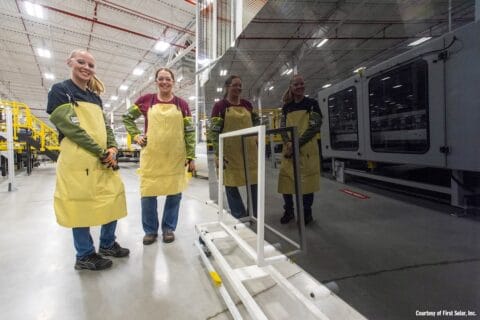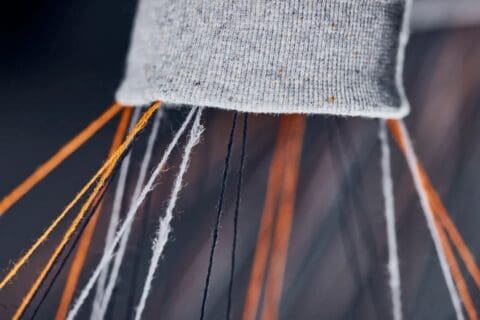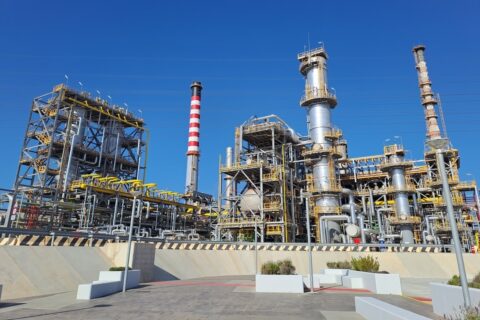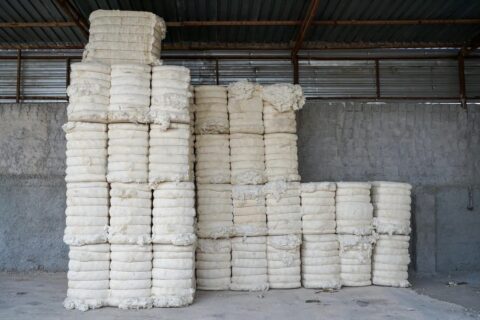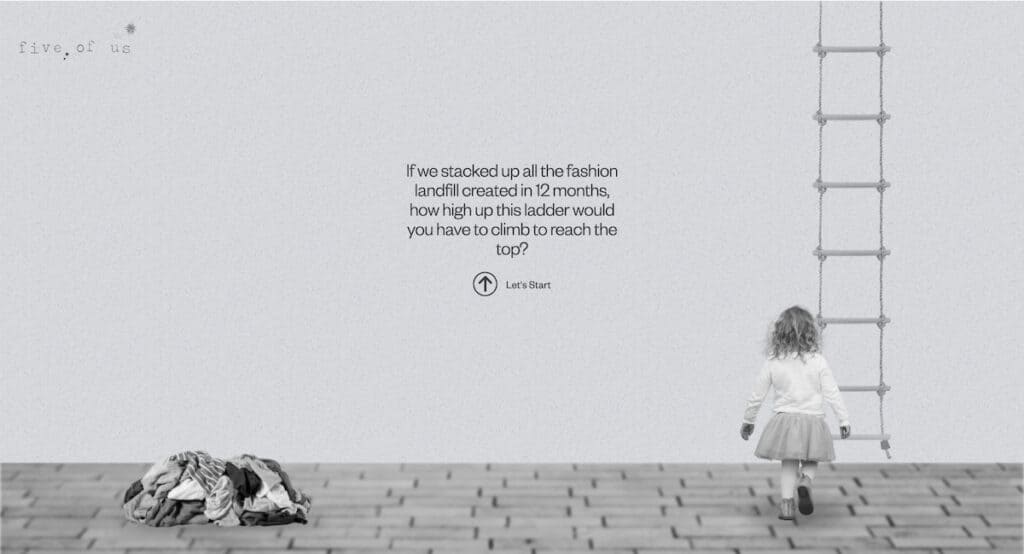
Piled high in real-time, the volume of fashion waste sent to landfill worldwide every year would dwarf such global landmarks as the Eiffel Tower and Burj Khalifa skyscraper within just a few seconds of stacking. The amount would then keep on growing, eclipsing mountains in a matter of minutes; rising up into space in much less than a year.
Childrenswear brand Five of Us has examined the data and created an interactive visual that is designed to demonstrate just how much the fashion industry contributes to landfill each year. The visual compares the volume of clothing in landfill to some of the world’s most well-known landmarks.
Viewers are invited to scroll through an interactive and educational page to discover answers to the question: ”If we stacked up all the fashion landfill created in a 12-month period, how high up this ladder would you have to climb to the top?”
The on-screen statistics then compare fashion industry waste to well-known global landmarks, such as the Eiffel Tower, Burj Khalifa and Mount Everest, plus even the International Space Station and, ultimately, the moon, to put the problem in context.
The answers to how high and fast the waste would pile are truly shocking:
- Every 16 seconds the equivalent of the height of the Eiffel Tower is thrown into landfill (324m); then
- The height of the Burj Khalifa skyscraper in just 42 seconds (828m);
- The height of Mt Everest every 7 minutes (8,849m);
- Taking only 6 hours to reach the International Space Station, (408,000m above Earth);
- Barely 8 months (228 days) to reach the moon, more than 384 million metres away.
Pollution problem of single-use outfits
The infographic draws on some of the latest statistics published on the EDGE Fashion Intelligence platform which reveal that of the 32 billion garments produced for the fashion industry each year, a whopping 64% of these will end up in landfill.
This gross amount of waste is due in part to the 94m kg worth of single-use outfits bought every year and also to the fact that 1 in 2 people throw unwanted clothes directly into the bin, instead of reselling them or giving them to charity. As a result, it is estimated that the fashion industry (and its supply chain) is the planet’s third largest polluter, after food and construction.
Commenting on the industry’s pollution problem, Queralt Ferrer, Founder of Five of Us, says:
“At Five of Us, we don’t pretend to have the solution to the problem that is sustainability in the fashion industry, but we do believe that our ‘made to order’ model is one responsible step in the right direction to reduce the problem of overproduction.
“While the fashion industry as a whole contributes more than a trillion dollars worth of waste to landfill every year, we rarely talk about how children’s fashion contributes to this. We think one of the key areas missing from the conversation is educating the next generation on how to shop and consume with sustainability in mind.
“More than 3.15 billion articles of children’s clothing are thrown away every year — almost half the amount of menswear, and a third of womenswear. It’s a huge problem, and this is why we believe that it is never too early to start educating our children about sustainability; and about where their clothing comes from (and ends up).”
Regional variations and microplastics leakage
An additional concern the fashion industry faces when it comes to sustainability is that of how long many of the materials used by manufacturers take to decompose.
While sustainably sourced fabrics such as cottons, silks and recycled fabrics break down naturally over time, most brands often turn to cheaper, machine-made fabrics to create their low-cost garments. Unfortunately for the environment, acrylic fibres such as polyester and nylons can take anywhere from 40 to 200 years to break down in landfill, leaving a carbon footprint of up to 11.53kg of CO2e per 2sq m.
Ultimately, clothes should be made not just to wear, but to keep, concludes Queralt Ferrer:
“When you really value the clothes you have, they will last longer and, in turn, have a positive impact on the environment. This is why our collection is based on a made-to-order model, uses responsibly sourced materials and is custom-designed to last.”
Five of Us, The Modern Artisan, is a children’s lifestyle brand on a mission to revive traditional crafts, skills and methods by placing them into a modern context, whilst working towards a responsible future. Each piece is made to order, using sustainably sourced fabrics and yarns. Customisable and unique designs allow for plenty of room to grow, through well-thought-through fits and adaptability in length and width.
Further Reading:
- More on Five of Us, the brand; plus, its sustainability story;
- Access interactive visual page , created by Five of Us around fashion industry’s waste problem;
- View latest fashion industry statistics published on the EDGE Fashion Intelligence platform;
- Also on SustMeme, Cruelty-free vegan sneaker uses cactus, not cows;
- Also on SustMeme, Slow fashion first for new sustainability standard;
- Also on SustMeme, Plastic waste gets Recycled for Radness into eco snow gear;
- Also on SustMeme, Circling back to Nature: Timberland to go net positive;
- Also on SustMeme, Sustainability: ‘Fashion Economy’ in The Times;
- Also on SustMeme, Ethics & Fast Fashion: ‘Supply Chain Strategies’ in The Times.
>>> Do you have sustainability news to broadcast and share? If you would like to see it featured here on SustMeme, please use these Contact details to get in touch and send us your Press Release for editorial consideration. Thanks.

